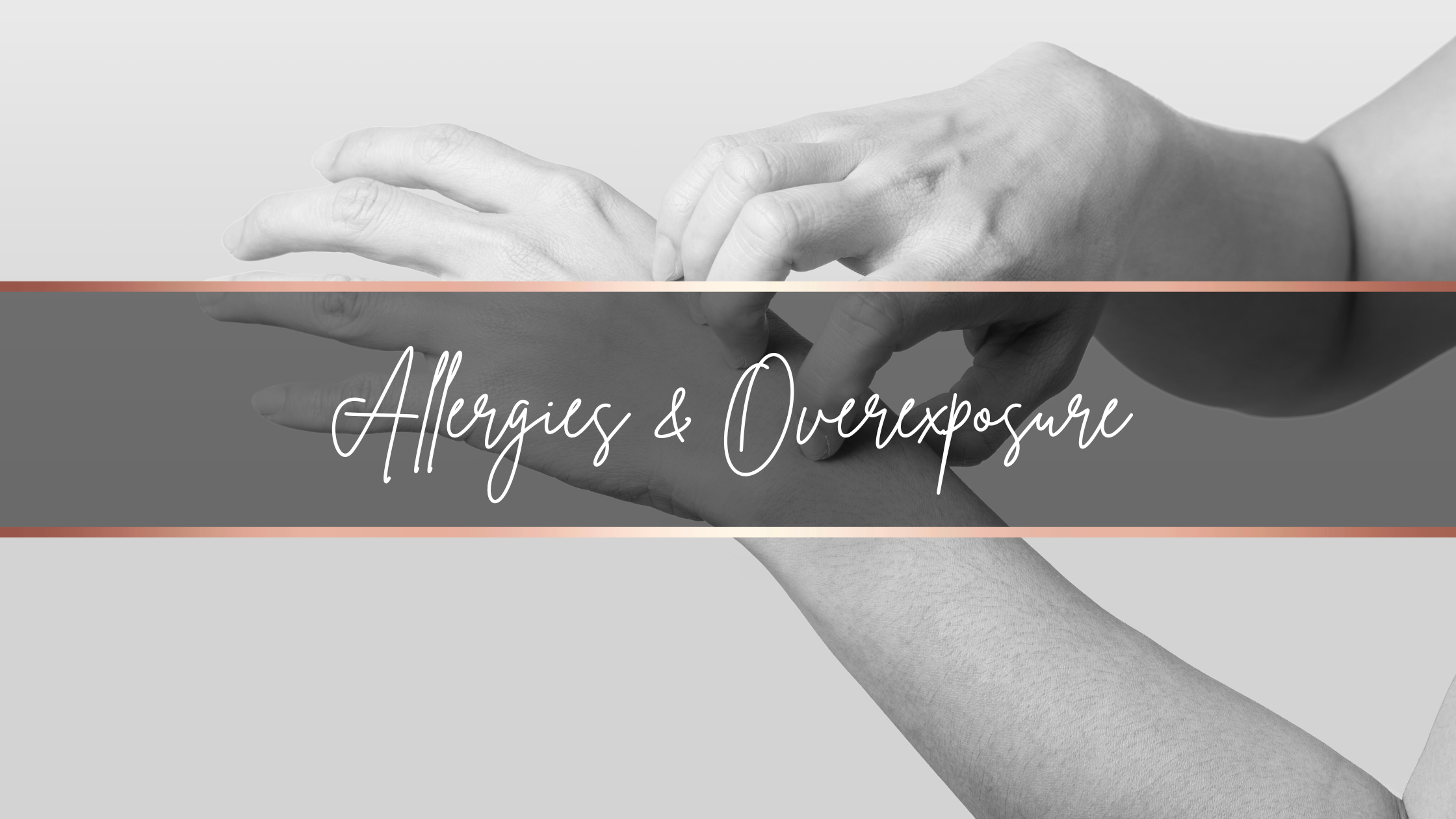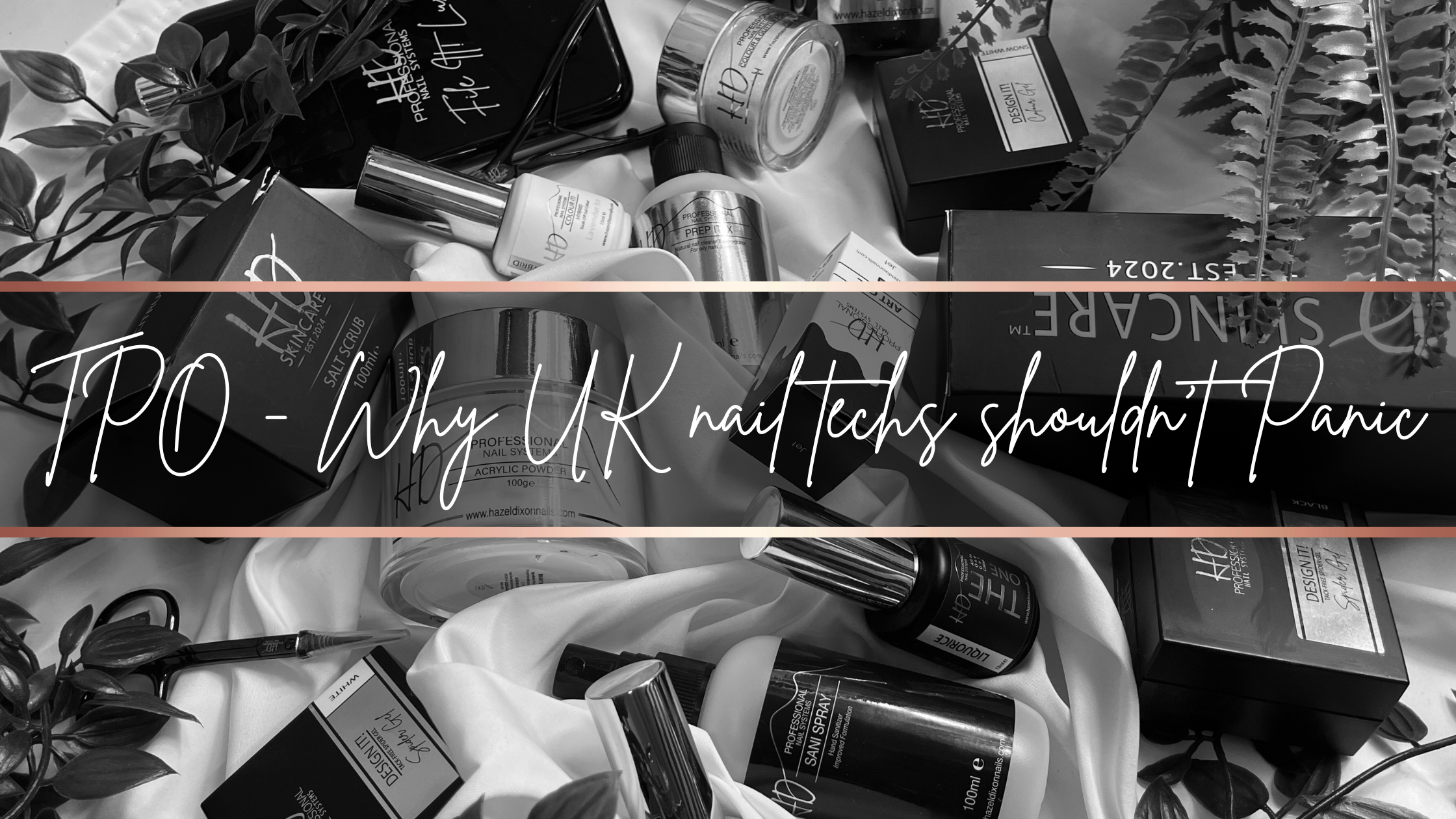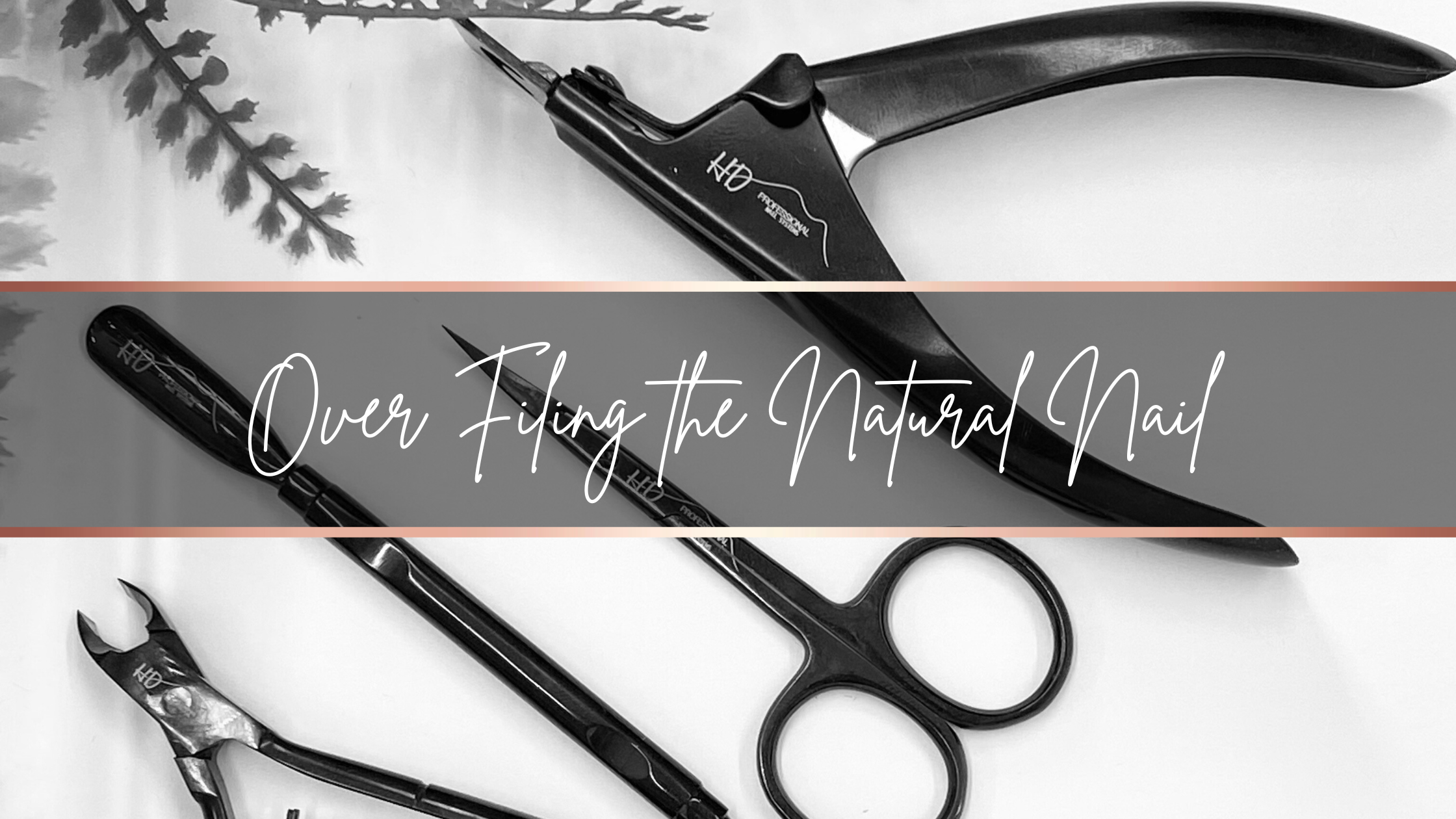Allergies & Overexposure, Is Hema really the devil ?

Allergies & Overexposure...
Due to the recent BBC reports on BBC, R2 and other media outlets regarding allergies and DIY home gel kits, we wanted to highlight this and give you as professionals more information. We will continue as always to support nail technicians through education, advice and only the best, quality products.
We as a supplier and brand owner want you to be assured that we will always support you and provide you with honest and fact based information.
We want to reassure you that we do not sell to consumers and are fully committed to providing nail professionals with PROFESSIONAL ONLY BRANDS. If you are a student in training we can also supply you with professional products to get you off to the best start possible in your career. Just upload an image of your qualification or a screenshot of you nail course booking in the uploads section when applying for an account.
Education is Key!
We have the UK's leading multi award winning education team with many of our educators being competition winners in their own right. We deliver only the highest quality and in depth education for beginners right through to advanced techniques and nail art classes. Our team offers all types of independent non-brand biased workshops and classes as well as HD Pro conversion courses and Akzentz courses, so there is something for everyone.
Why is HEMA being demonised?
HD Professional Nail Systems is predominantly a HEMA free brand with only a few products containing a small amount that is well within the safe levels recommend. However HEMA is not "the devil" and there has been a lot of misinformation and scaremongering around this particular chemical, we as brand offer both HEMA and HEMA free products so our customers have a choice and so do their clients.
Due to it being a known allergen it has became wrongly demonised due to some formulas having very high percentages, and often this is used as a marketing agenda to aid sales of "HEMA free" and "Hypoallergenic" products, despite HEMA being safely used for over 30 years at its recommended levels.
One thing to also remember is that HEMA is also used in dentistry, printing inks, paint resins and by orthopaedic surgeons. Some cheaper brands and/or poorly formulated products can contain very high levels of HEMA over the recommended percentages, this gives the user amazing adhesion even when they have very little levels of skill or knowledge on correct application. This in turn makes the user believe the product they're using is amazing as it doesn't budge!
HEMA's molecular size is very small, so it has the potential to absorb easily into the skin when not applied properly. So this is often why HEMA is being seen as the main issue. HOWEVER, nail products are designed for use on a healthy natural nail and not designed to be used on the skin - this is why its imperative that every nail professional has completed a fully comprehensive nail course for the product they are using.
Correct application, quality formulations with low percentages is paramount...........
Due to the demonisation by some, many industry brands were forced to make a change and formulate/offer HEMA free products. You will often see posts on social media forums, techs asking for recommendations on HEMA free products.
If you have an allergy to HEMA, then of corse you want to use a HEMA free product, but don't be "scared" into using HEMA free because of a particular narrative. If you work cleanly, safely and use your products ( incl the correct lamp) as directed by the brand and have completed your training then this eliminates most of the risks. This is the same for ANY product even so called "HYPOALLERGENIC" products. Did you know you can become allergic to hypoallergenic products too ? (we will talk about this later)
Don't assume if you have an irritation or you think you have an allergy that HEMA is defiantly the reason behind it. If you think you've developed an allergy, stop using the products and go to your GP. Your GP can recommend the best way forward and may advise you to see a dermatologist for testing so you can find out exactly what it is thats causing the issues. Then once you know, you can avoid any products containing those chemicals.
What is HEMA?
HEMA – Hydroxyethyl Methacrylate is a monomer that has been used for many years in nail products due to its superb adhesion properties.
Having adhesion properties in your nail products is important as it helps prevent lifting and service breakdown. Sometimes in poorly formulated HEMA free products an alternative is used which may require a rougher grit file like a 150grit to be used on the natural nail to ensure the product adheres well, which causes damage and thinning of the natural nail (see our other blog post on "over filing of the natural nail and how to avoid it" for more in depth information). HD Pro's HEMA free products do not require a coarse grit file for preparation of the nail due to their quality formulation and preparation techniques used.
HEMA is classed as an allergen (so are many other chemicals used in nail products) however when it is used in a high quality, well formulated nail product and used correctly by professionals it is safe to use as concluded by the SCSS.
Scientific Committee on Consumer Safety (SCSS)
The SCCS concluded the following:
In light of the data provided, does the SCCS consider monomers of HEMA and Di-HEMA Trimethylhexyl Dicarbamate, safe at concentrations of up to 35% and 99% respectively when used in topically applied UV-cured artificial nail modelling systems?
The available evidence suggests that normal nail plate acts as a good barrier to penetration of chemical substances in general, and that both methacrylate monomers (HEMA and di- HEMA-TMHDC) polymerise rapidly under UV curing when applied as part of an artificial nail modelling system. This leaves very little chance for the monomers to be absorbed in any appreciable amount through the nail plate. In view of this, the SCCS is of the opinion that HEMA and di-HEMA-TMHDC, when applied appropriately to the nail plate at concentrations of up to 35% and 99% respectively as part of an artificial nail modelling system, are not likely to pose a risk of sensitisation, provided that their use is restricted to the nail plate only and contact with the adjacent skin is avoided.
Both HEMA and di-HEMA-TMHDC are weak to moderate sensitisers and pose a risk of sensitisation from misuse of the products or from inappropriately carried out application or from unintentional contamination of the skin adjacent to the nails under normal and reasonably foreseeable conditions of use.
https://health.ec.europa.eu/system/files/2021-08/sccs_o_214_0.pdf
“HEMA does have a significantly higher potential to cause skin allergies. However, it ‘could’ be used safely. It’s not inherently dangerous. Yes, HEMA can cause problems for any nail technician that doesn’t work safely and/or doesn’t properly cure their products using the correct nail lamp- which can also can be unsafe. So, it can be a “telling” ingredient, as well.
Avoiding HEMA doesn’t mean you still won’t become allergic to something else. That’s why it is more important to learn about working safely, than it is to know what ingredients your using.”
Doug Schoon, Internationally recognised Nail Scientist and Nail Knowledge Expert
What if you touch the skin during application?
None of us are perfect and on rare occasions you may accidentally touch the skin during the application process. The thing to remember is to thoroughly remove any product that has touched the skin (wether or not it contains HEMA) and not to use your nails or fingers to remove it! as you will only be transferring this uncured product to your own skin. Always remove uncured product from the skin before curing in the lamp, you can use a wooden manicure stick or similar and cleanser.
Always get your client to wash their hands after application is finished and before applying any nail & cuticle oil.
What is IBOA?
Isobornyl Acrylate (IBOA) – is also a monomer that has also been used for many years in nail products. Again, It is an allergen but when used correctly and professionally is safe. Its purpose is to provide good hardness, but flexibility with impact resistance. It does have some adhesive properties and in a recent plight to undo the demonisation of HEMA, shifting the limelight to IBOA. Even labelling it the ‘Allergen of the Year’. Allergen of the Year is an annual award voted upon by the American Contact Dermatitis Society, you will find it listed on Wikipedia, where you see many everyday items such as gold in previous years. The source pulled information from a dermatologist report investigating the correlation of the chemical and diabetic patients. (IBOA is a component of the glue commonly used in many medical supplies and diabetes device components.) In conclusion, it is important to remember that nail products are for nails – not skin.
Theresa Foddering - Lecente Educator
“IBOA like any other chemical found within a nail coating may cause skin sensitisation in its raw form, once polymerised it turns in to an inert polymer and poses almost zero risk to the wearer. There is almost zero risk of any adverse reactions provided the coating is applied by a qualified professional with the relevant training to the nail plate using the correct recommended light source” O.S, Independent UK Chemist
Hypoallergenic and what does it really mean?
As a brand owner and supplier you will have never seen us use the term "hypoallergenic" although a huge proportion are classed as so called "hypoallergenic". We decided when our brand launched to not use the word hypoallergenic on any of our products as we felt it can often be mis-leading and can give a false sense of "security" and many believe then that "other" products are then not safe.
All our products are formulated by our chemists and manufactured to the highest standards, which are fully compliant and safe for use when applied correctly. We believe in transparency and ingredients for our formulations can be found on the SDS sheets available as a download from our website.
Hypoallergenic meaning "below average" or "slightly allergenic" , is a term meaning something (usually a cosmetic) can possibly cause fewer reactions. This term was first used in 1953 for an advertising campaign for cosmetics. It was then widely used by skincare cosmetic manufacturers and brands.
However, no country to date has been able to regulate the standard use of the term hypoallergenic. The FDA in the USA tried to regulate it a few years ago and were challenged by huge global cosmetic companies against it, this meaning that NO manufacturer or brand has to meet any regulations or do any testing to validate such claims. There was even a study conducted back in 2017 for the top selling skin moisturisers and it was found that 83% of those marketed as "hypoallergenic" contained at least 1 allergenic chemical.
Wikipedia.org
So, in essence any manufacturer or brand can claim their product is hypoallergenic as it can mean whatever a particular company wants it to mean. No brand can give you a guarantee that you will not react to their products, everyone is different and can react to different chemicals in different ways.
For me personally I'm allergic to penicillin, does this make it an un safe product ? No , of corse not as thousands of people can take it with no problems at all but for me it is not safe to take as I'm allergic, so i am always prescribed a different antibiotic. We all have different genetics and can react differently !
Nearly all cosmetic ingredients can cause allergies to some extent, its important to use your products as recommended along with safe working practices, as well as ensuring you have a good basic understanding and knowledge of:
anatomy & physiology, diseases & disorders, chemistry of the products, allergies and how they can happen, health & safety, safe working practices, decontamination processes, how to perform a consultation, product application & removal
If you feel your initial course didn't cover any these or it may have been a while since you completed your training, why not invest in your CPD with the brand you're using to learn more. None of us will know everything and there is always something new to learn. We work in a fast paced industry and very often there is new advice or evidence that can change how we work, so its great to keep up with these changes. Education is key !
Marian Newman's the Nail knowledge has some great free education and articles as well as paid education. Check it out here....
https://nailknowledge.org/professional-nail-courses/allergies-and-how-they-happen
Overexposure and how to help prevent it.
We need to remember that all the nail products we use contain chemicals that can cause irritation when applied incorrectly or mis used. They are designed for use on a healthy natural nail, not the skin. But do not forget we touch our faces and body with our hands so it’s just as easy to spread irritation further!
A chemical is everything you can see & touch except electricity and light. Many people deem chemicals as bad and not good for you, but this isn’t true as all chemicals have a safe and unsafe level of exposure. Knowing and understanding the chemicals you work with and following manufacturers guidelines on safe levels will help prevent any overexposure.
Vapours in the air cause odours and rapidly evaporating liquids can give off large amounts of vapour. When working with your monomer ensure you keep the odours to a minimum by only using the amount you need for that client, dispose of any soiled towels in a lined metal bin, always replace the lid on your dappen dish as soon as you’ve finished using it.
When using gels ensure you are using the correct recommended lamp by your manufacturer. This ensures a full and proper cure.
All chemicals have a safe and unsafe level of exposure, Overexposure happens when you exceed the levels deemed as safe. Overexposure can affect both client and nail technician, this usually occurs when the individual is exposed repeatedly to a chemical over a long time. When using acrylics this is most likely to happen when unreacted product touches the skin and for gels it is usually due to uncured product sitting on the nail.
Skin irritation, itchiness of the skin & eyes can all be warning signs that overexposure has occurred, and if the use of the chemical continues it may cause the individual to become sensitive or allergic to it. If this occurs, it is recommended to then stop using that (product) chemical, as you will have developed sensitivity to that particular product.
A common thing many nail technicians do that could cause overexposure is wiping their brush on a paper towel and then leaning on it. Always be aware of this and ensure your paper towel is kept to the side of you not in front of you.
There are 3 ways that a chemical could enter your body and cause overexposure. These are classed as routes of entry:
- Inhalation: by breathing in vapours or dust.
Keep lids on pots when not in use, ensure adequate ventilation, dispose of waste correctly in metal bins with liners.
- Absorption: through contact with the skin.
Use the correct application techniques, decant products safely & correctly wearing suitable protective garments.
- Ingestion: by accidentally swallowing. Dust particles dropping onto food into uncovered drinks
ALWAYS Wash hands before eating and eat/drink away from your nail desk, use clean towels for every client, keep all products out of reach of children.
To become over exposed to a product and develop an allergy it usually means that there has been prolonged and repetitive contact with the skin.
Main reasons for this happening are:
- uncured or under-cured product due to incorrect cure time or incorrect lamp used
- Wiping gel off the skin with your finger or nail
- Uncured dust product, this can happen when filling an under cured nail or when performing a soak off/removal of product.
- Wiping the sticky residue from gels
- Using over sized acrylic brushes that hold a lot of liquid
How to avoid causing reactions:
- Use the correct Lamp as recommended by your brand.
- Use brands together in full
- Correct mix ratios
- Do not touch uncured or under-cured product with your skin
- Wear gloves
- Dust & Vapour extraction to the SR13 regulation
- Clean your desk at regular intervals
- Keep all product packaging clean, wipe down after each use
- Use legal, registered products sold to professionals only
- Wear the correct PPE for the service your performing
Prevention is better than cure!
Education, Education, Education
Education really is your key to success ! even after over 18 years in the nail industry i always try to attend at least 2 classes and/or seminars every year. As i said earlier our industry is always innovating with new products and techniques.
Invest in your brands conversion training or attend a 1-2-1 (which can be customised to suit your needs) not all products apply the same and there are different techniques for different products to ensure you get the very best out of your product. Give your clients the service and longevity they want that will see them keep coming back to you !
If you are ever unsure about anything, contact your brand or educator, the majority of brands are honest and trustworthy and want to help their customers.
HD X
References: Facebook. (n.d.). Log into Facebook. [online] Available at: https://www.facebook.com/DougSchoonsBrain/posts/doug-help-many-nail-techs-are-sellingthrowing-away-hundreds-of-dollars-worth-of-/3075980105960421
Aerts, O., Herman, A., Mowitz, M., Bruze, M. and Goossens, A. (2020). Isobornyl Acrylate. Dermatitis, 31(1), pp.4–12. doi:https://doi.org/10.1097/der.0000000000000549.
Healthline. (2021). The Sticky Truth About Diabetes Device Adhesives. [online] Available at: https://www.healthline.com/diabetesmine/diabetes-device-adhesives.




